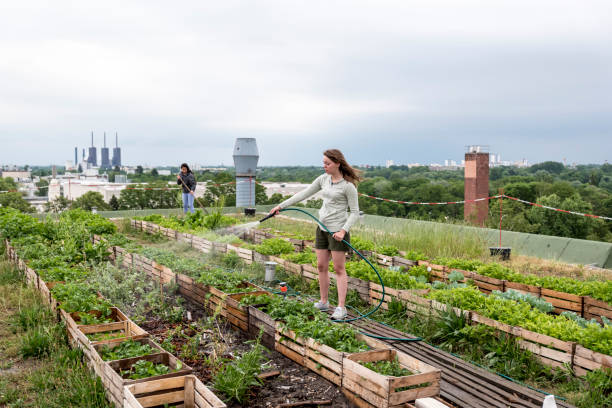Urban agriculture's role in shortening ingredient supply chains
Urban agriculture is reshaping ingredient sourcing by moving production closer to kitchens, bars, and food processors. This proximity can reduce transit times and waste, improve seasonal flavor and freshness, and create new collaborations between growers, chefs, and foodtech providers to enhance sustainability and safety across urban food networks.

Urban farming is altering how ingredients move from grower to plate by reducing physical distance and tightening operational connections between producers and buyers. Shorter routes preserve flavor and nutrient quality, while enabling chefs and beverage makers to adapt menus faster to seasonal availability. When paired with foodtech for inventory and delivery optimization, urban farming can lower emissions and shrink the coldchain burden for highly perishable items.
How does urban farming improve sourcing and seasonality?
Urban farming enables restaurants, cafés, and retailers to source herbs, leafy greens, and certain vegetables within hours or days of harvest rather than weeks. That proximity supports menu planning that responds to true seasonality: chefs can design weekly dishes based on what’s freshly available, adjusting flavor profiles and portion sizes without long procurement lead times. For small-scale suppliers, shorter supply lines simplify communication and logistics, strengthening sourcing relationships and reducing the uncertainty tied to far-flung suppliers.
What sustainability benefits arise from shorter supply chains?
Shorter chains typically mean fewer transport miles, reduced refrigeration needs, and lower packaging requirements—all factors that improve sustainability metrics. Urban farming systems often use controlled environments that conserve water and reduce fertilizer runoff, and some facilities capture waste heat or integrate renewable energy. While urban production won’t replace regional agriculture for staple crops, it can reduce spoilage and emissions for specialty ingredients and high-value perishables when managed with sustainable practices.
Can urban farming support fermentation and plantbased innovation?
Close proximity between growers and small-scale processors encourages experimentation with fermentation and plantbased products. Freshly harvested botanicals and vegetables arriving quickly at fermenters, kombucha makers, or plantbased kitchens can yield more consistent and vibrant flavor in condiments, beverages, and alternative-protein formulations. Urban collaborations also shorten feedback loops: chefs and food developers can trial small batches of seasonal ferments or plant-based components and refine recipes faster based on immediate sensory results.
How do foodtech, coldchain, and delivery adapt to urban models?
Foodtech platforms designed for local networks help coordinate inventory, traceability, and last-mile delivery for urban farming produce. Reduced transit distances can lessen coldchain dependency, but they require agile logistics—frequent micro-shipments, scheduled pickups, and same-day delivery options. Digital tools that match demand with short-batch supply, optimize routes, and manage real-time quality data help preserve flavor and safety while minimizing overpackaging and waste in the delivery phase.
What packaging, upcycling, and beverage opportunities emerge?
Proximity fosters innovative approaches to packaging and upcycling. Nearby food businesses can trial reusable or minimal packaging systems and capture organic byproducts for composting or secondary uses. Trimmings and leftover botanicals can be upcycled into flavor extracts, teas, or infusion bases for beverage makers and menu items. These local loops reduce material waste, create new ingredient streams for beverage and culinary applications, and support sustainable packaging strategies aligned with consumer expectations.
What safety and regulatory issues should be considered?
Shorter supply chains don’t eliminate safety risks. Urban farming operations must comply with local regulations governing water quality, soil contaminants, and post-harvest handling. Facilities that supply restaurants or retail should maintain traceability, proper packaging, and clear labeling for allergens and processing methods. Food safety plans, routine testing, and alignment with municipal inspection requirements ensure that faster sourcing also meets necessary hygiene and safety standards.
Shortening ingredient supply chains through urban farming offers tangible benefits in flavor preservation, seasonality responsiveness, and reduced transport impacts. When combined with foodtech solutions for delivery and traceability, and supported by thoughtful packaging and upcycling practices, urban production can strengthen local sourcing and menu creativity. Maintaining rigorous safety controls and realistic assessments of scale helps urban farming complement regional agriculture, contributing to resilient and more sustainable urban food systems.





